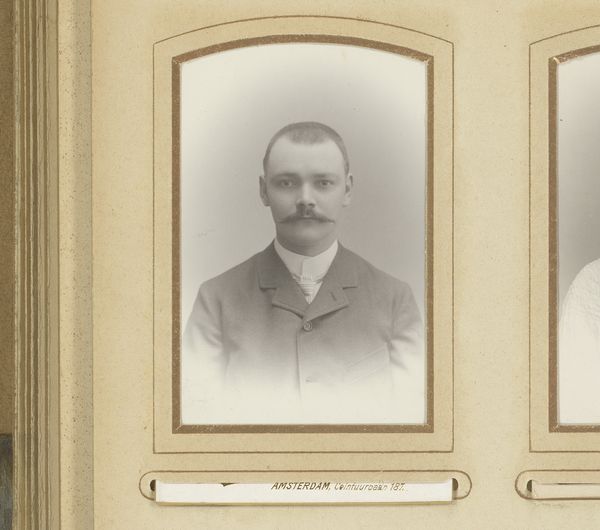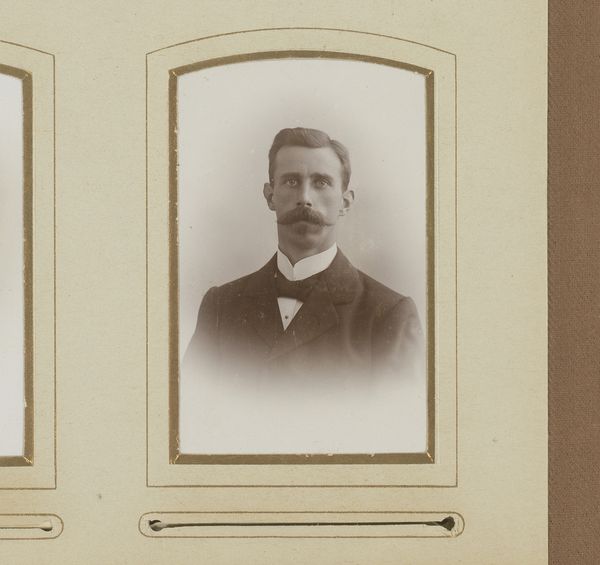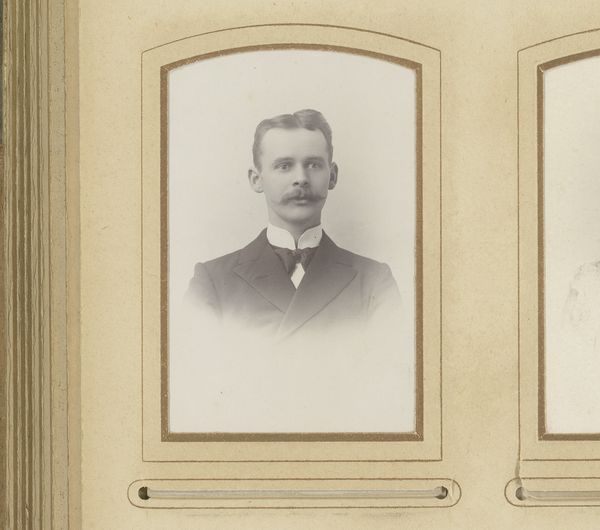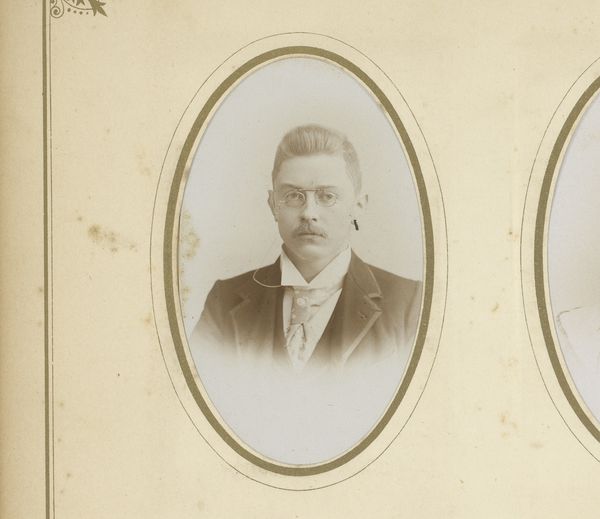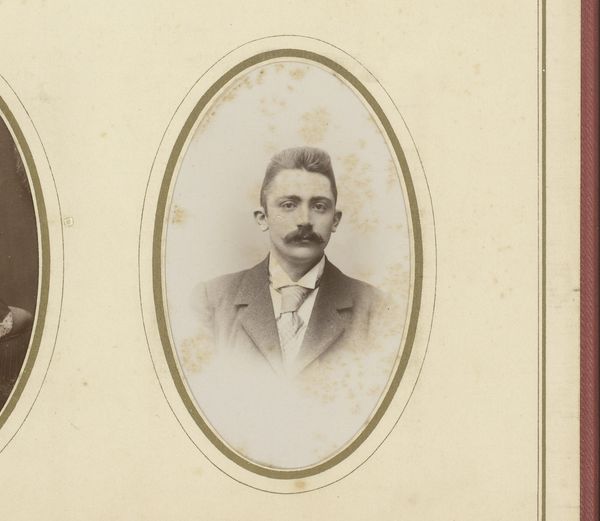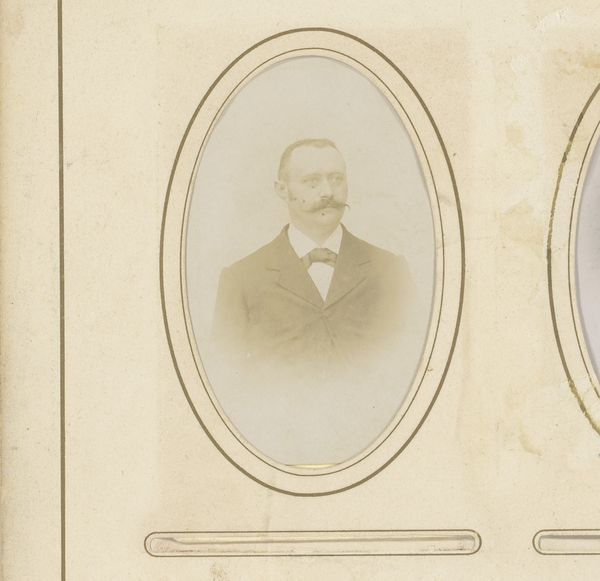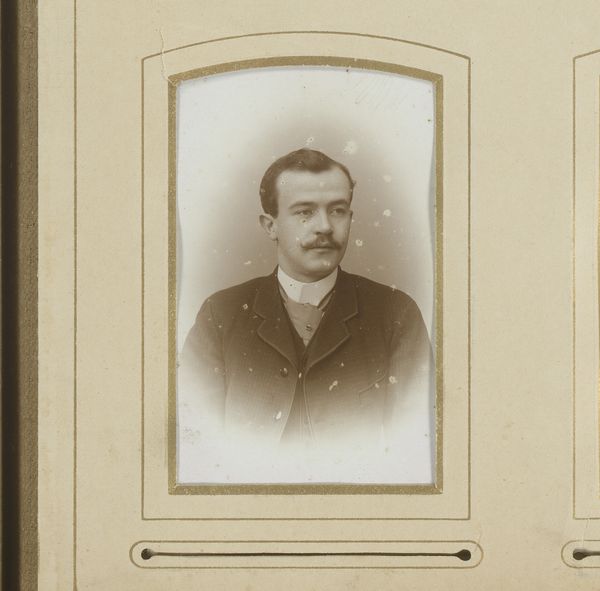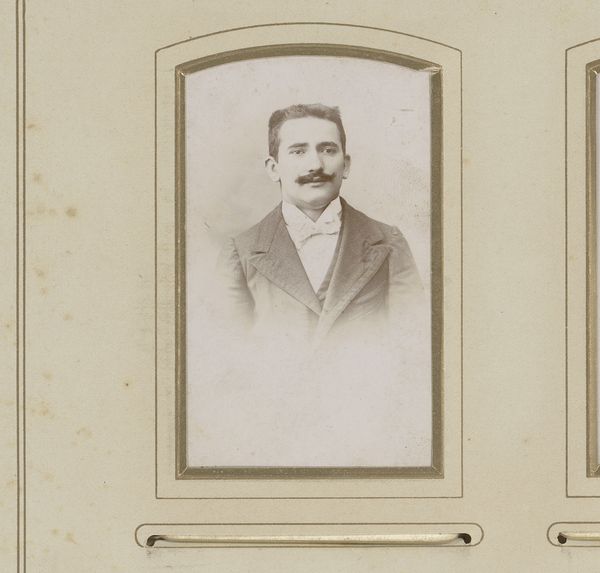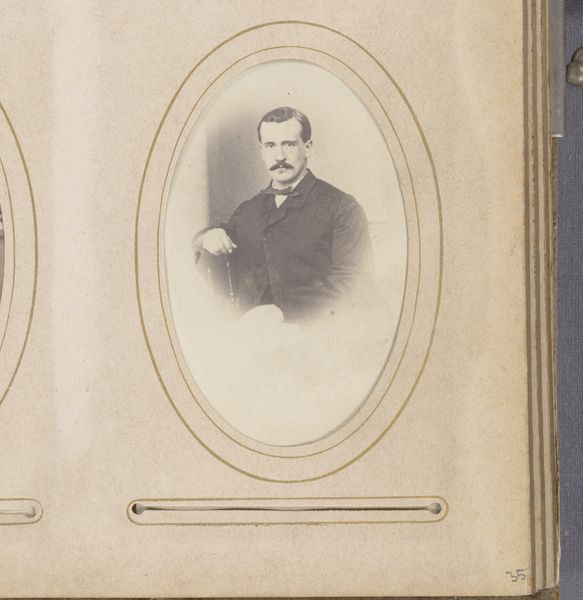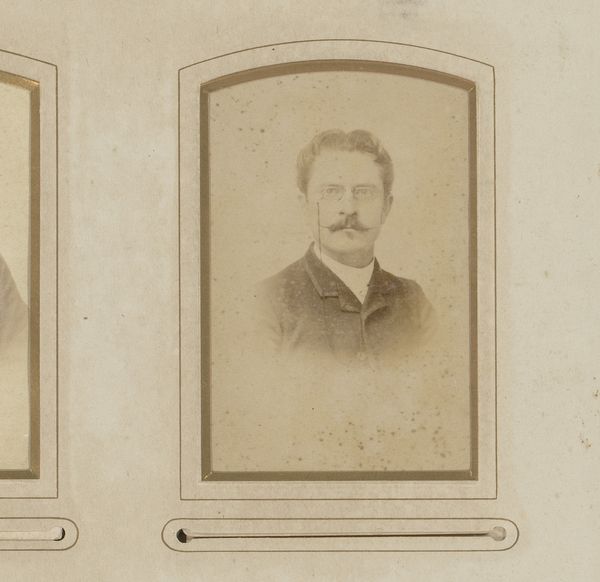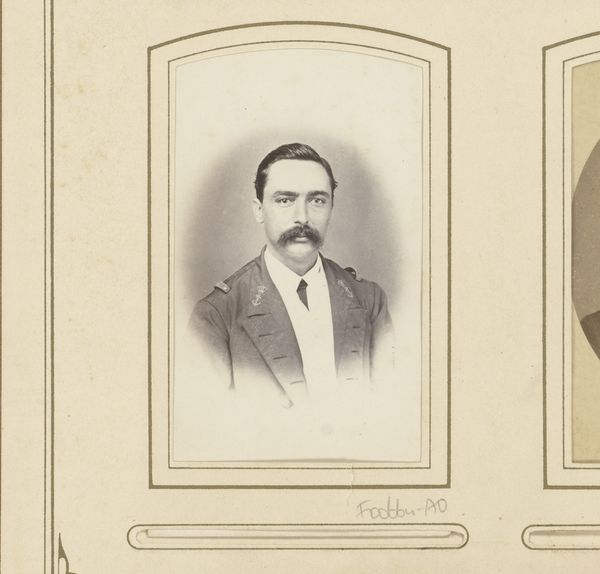
photography, gelatin-silver-print
#
portrait
#
photography
#
gelatin-silver-print
Dimensions: height 84 mm, width 51 mm
Copyright: Rijks Museum: Open Domain
Curator: Let's examine this portrait, titled "Portret van een man met snor en vlinderstrik", which translates to "Portrait of a man with moustache and bow tie". Dating from between 1880 and 1915, it is a gelatin silver print. Editor: It exudes such an interesting formality. The sitter’s gaze is direct and engaging, almost challenging, and the high contrast amplifies the details in his face and clothing. There's a quiet sense of strength conveyed through its stark composition. Curator: Absolutely. The visual clarity achieved by the gelatin silver process is paramount here. The light plays so acutely, and it highlights not only the subject’s strong features, but it also makes his expression particularly assertive, as if every pore were captured in perfect resolution. The semiotic function of this portrait leans on this perfect picture resolution in the subject's assertive face and posture to convey specific, upper class, late 19th and early 20th century cultural ideals and values, a display of perfect character. Editor: And the choice of gelatin silver as a medium, then, is quite relevant. By this period, gelatin silver had become dominant, due in part to the industrial manufacture of gelatin emulsions. It really opened up photographic production and the professionalization of portrait studios for an emergent bourgeoisie. He looks very proper in his jacket and tie, certainly a wealthy customer, perhaps the photo studio wanted to market it so the general public knew it was affordable for everyone. Curator: That context absolutely shapes our understanding. The tonality, for instance, is crucial in underscoring the aesthetic and cultural preferences of the time. Notice how the narrow tonal range helps convey a sense of modernity? Editor: Yes, while it's sepia-toned and undeniably nostalgic now, you’re right, it represents technological progress and wider accessibility. To think of how these mass-produced photographic portraits would shape visual culture and influence self-representation is quite interesting. Curator: Agreed. It is a reminder of how evolving techniques impact not just aesthetics, but social norms. The formal approach provides insights into cultural semiotics through form and the way images perform meaning. Editor: Thinking of this image through its historical context gives one more respect for the way artistic, and particularly photographic, media shape self-perception and wider consumption patterns. It really makes one stop and ponder about this.
Comments
No comments
Be the first to comment and join the conversation on the ultimate creative platform.
